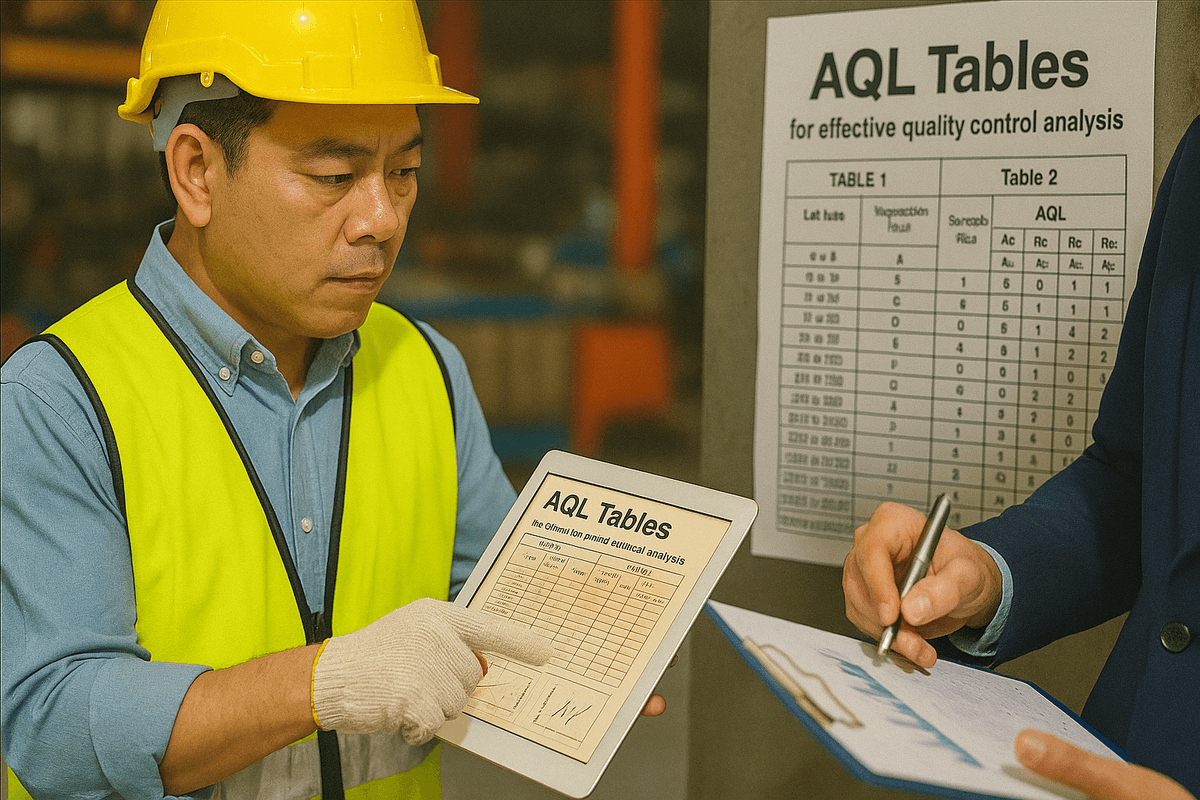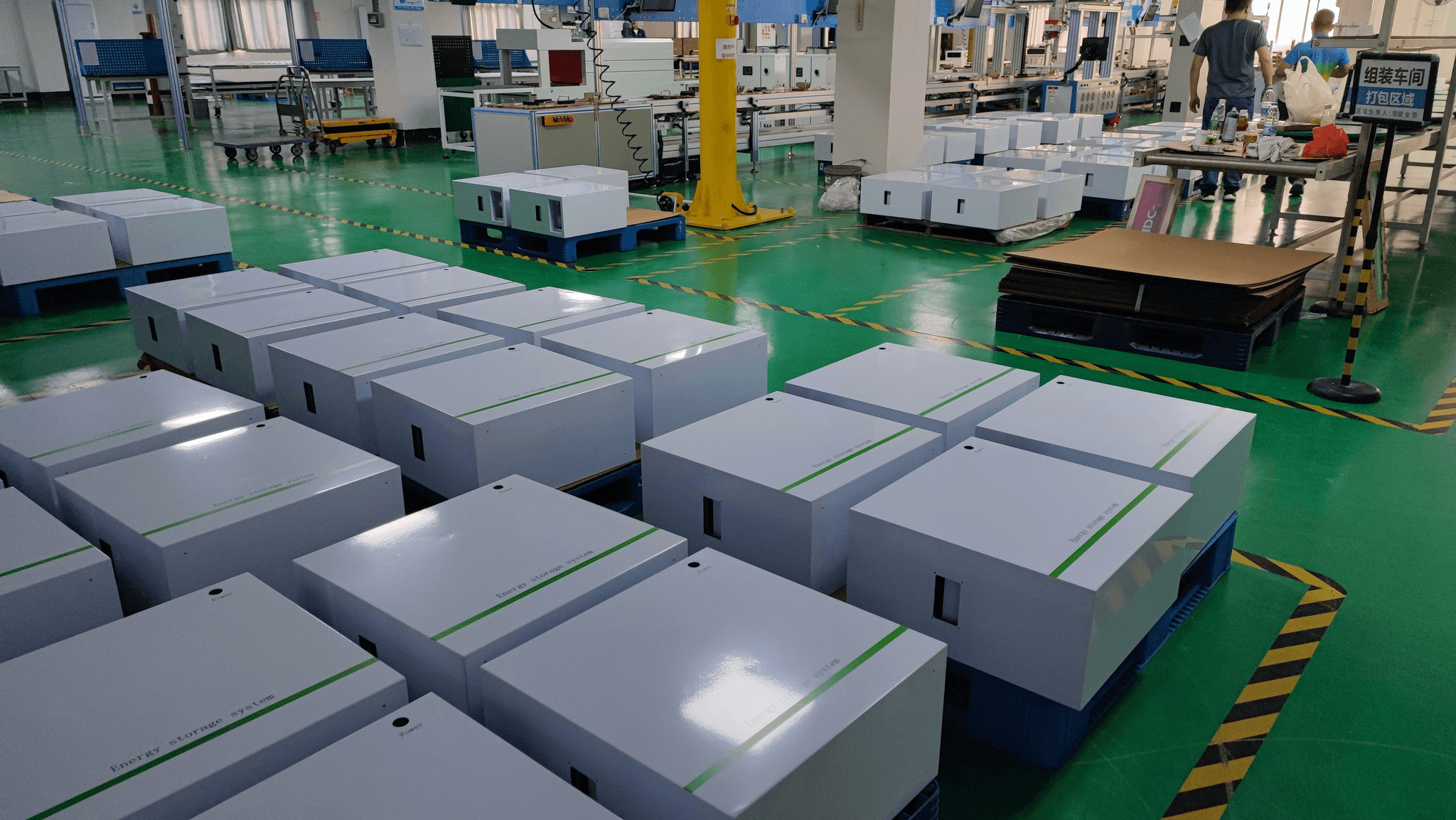Introduction
In the realm of quality control, understanding Acceptance Quality Limit (AQL) is crucial for businesses aiming to maintain high standards. AQL acts as a benchmark in quality inspection, helping organizations assess the acceptability of their products during manufacturing and shipping processes. With AQL tables at their disposal, quality control inspectors can make informed decisions that significantly impact product reliability and customer satisfaction.
Understanding AQL Basics
Acceptance Quality Limit, or AQL, is a statistical measurement used to determine the maximum number of defective items considered acceptable in a sample batch. By employing AQL sampling techniques, businesses can effectively monitor quality and control without inspecting every single item produced. This approach not only saves time but also resources while ensuring that products meet established standards.
Importance of AQL in Quality Control
The importance of AQL in quality control cannot be overstated; it serves as a guiding principle for manufacturers looking to deliver consistent product quality. Quality assurance inspectors rely on AQL levels to evaluate whether batches meet predefined criteria before they reach consumers or retailers. Ultimately, effective use of AQL contributes to enhanced customer trust and loyalty by minimizing the risk of delivering subpar products.
A Quick Look at AQL Tables
AQL tables provide a straightforward way to interpret acceptance criteria based on sample sizes and defect limits, making them essential tools for quality control inspectors. These tables outline various levels of acceptable defects per lot size, offering clarity on what constitutes an acceptable product batch during inspections. Understanding how to read these tables is vital for any organization committed to maintaining high-quality standards throughout their production processes.
What is Acceptance Quality Limit?

Understanding the Acceptance Quality Limit (AQL) is crucial for anyone involved in quality control. AQL serves as a benchmark that helps businesses determine acceptable levels of defects in products during quality inspection processes. By establishing this limit, companies can effectively balance quality assurance and production efficiency, ensuring they meet customer expectations without incurring excessive costs.
Definition of AQL
The Acceptance Quality Limit (AQL) is defined as the maximum number of defective items considered acceptable in a sample batch during quality inspection. It serves as a statistical measure used to evaluate whether a lot meets predetermined standards for quality and control. Essentially, AQL provides a clear guideline for quality control inspectors to assess product compliance, ensuring that any defects fall within acceptable limits.
Role of AQL in Quality Assurance
AQL plays a pivotal role in quality assurance by providing a structured approach to evaluating product quality before it reaches consumers. By using AQL sampling techniques, businesses can identify potential issues early on and take corrective actions to minimize defects. This proactive approach not only enhances customer satisfaction but also fosters trust between manufacturers and clients, which is vital in today’s competitive marketplace.
Difference Between AQL and Other Standards
While there are various standards for measuring product quality, AQL stands out due to its focus on statistical sampling rather than exhaustive inspections. Unlike total inspection methods that examine every item, AQL allows for efficient resource allocation by assessing only a representative sample from production batches. This distinction makes AQL particularly appealing to businesses seeking an effective balance between maintaining high-quality products and optimizing operational efficiency compared to other standards like ISO or Six Sigma.
The Significance of AQL Sampling

In the realm of quality control, AQL sampling plays a pivotal role in ensuring that products meet predetermined standards before they reach consumers. By utilizing AQL tables, companies can establish acceptable quality limits that govern their inspection processes. This methodology not only enhances product reliability but also streamlines the overall quality inspection workflow.
How AQL Sampling Works
AQL sampling operates on a simple yet effective principle: inspect a representative sample of items from a lot to determine if the entire batch meets quality standards. The process begins by selecting an appropriate sample size based on the lot size and desired AQL level, which is typically defined in percentage terms, indicating the maximum allowable defects. Quality control inspectors then evaluate the sampled items against AQL tables to decide whether to accept or reject the lot based on their findings.
This systematic approach allows businesses to maintain high-quality standards while minimizing time and resource expenditure during inspections. Moreover, it provides a clear framework for decision-making, reducing ambiguity around product acceptance criteria. Ultimately, this method helps ensure that only products meeting quality assurance requirements make it into consumers' hands.
Benefits of Using AQL Sampling
Utilizing AQL sampling offers numerous benefits for organizations striving for excellence in quality and control. First and foremost, it reduces inspection costs by allowing businesses to focus on smaller samples rather than inspecting every single item produced. This efficiency not only saves time but also conserves resources while still providing reliable insight into overall product quality.
Additionally, using AQL sampling can enhance customer satisfaction by ensuring that defective products are kept out of circulation. When customers receive high-quality goods consistently, their trust in your brand grows stronger—an invaluable asset in today's competitive marketplace. Furthermore, employing qualified quality assurance inspectors who understand how to interpret AQL tables effectively ensures accurate results and fosters continuous improvement within manufacturing processes.
Determining Your AQL Level
Determining your appropriate AQL level is crucial for aligning your inspection practices with your business goals and customer expectations. Factors such as industry standards, market competition, and customer feedback should all play a role in defining what constitutes an acceptable level of defects for your products. Typically set between 0% (zero defects) and higher percentages like 2% or 4%, the chosen level should reflect both risk tolerance and product criticality.
Once your ideal AQL level is established, it's essential to communicate this clearly with your quality control team so they can apply it effectively during inspections using relevant AQL tables for reference. Regularly reviewing this level based on changing market demands or internal performance metrics will help maintain optimal quality assurance practices over time. Partnering with professionals like China Inspection Pro can further streamline this process by providing expert guidance tailored to your specific needs in global trade.
AQL Tables Explained
AQL tables are essential tools in the realm of quality control, providing a structured way to determine acceptable quality levels in various products. These tables help quality assurance inspectors and quality control inspectors make informed decisions about product acceptance based on statistical sampling methods. By understanding how to read and utilize AQL tables, businesses can effectively manage their quality inspection processes and ensure compliance with industry standards.
Overview of AQL Tables
AQL tables serve as a reference point for determining the maximum number of defective items allowed in a sample size during quality inspections. They categorize products based on different AQL levels, which reflect varying degrees of acceptable defects according to specific industry requirements. By using these tables, companies can streamline their quality control measures and enhance their overall product reliability.
In essence, an AQL table outlines the relationship between sample size and acceptance numbers for defects, allowing businesses to quantify risk while maintaining high-quality standards. The systematic approach of these tables simplifies decision-making for quality assurance inspectors by providing clear guidelines on what constitutes acceptable performance in production batches. This clarity is crucial for maintaining trust between manufacturers and consumers alike.
Interpreting AQL Tables
Interpreting AQL tables may seem daunting at first glance, but once you grasp the basics, it becomes second nature. Each table typically includes columns representing sample sizes alongside corresponding columns indicating the maximum allowable number of defects—this is where those pesky numbers come into play! To effectively use an AQL table during a quality inspection, one must first determine the appropriate sample size based on batch size, then locate that sample size within the table to find out how many defects are permissible.
For example, if you have a batch of 1,000 units and you're using an AQL level of 1%, your table will guide you on how many defective units are acceptable before rejecting the entire lot. This process allows both quality control inspectors and businesses to maintain rigorous standards while also avoiding unnecessary rejections that could lead to financial loss or delays in production schedules. Understanding this interpretation is vital for effective implementation of aql sampling strategies.
Real-world Examples of AQL Tables
Real-world examples of AQL tables illustrate their practical application across various industries—from electronics manufacturing to textiles—showing just how versatile these tools can be in ensuring product excellence during quality inspections. For instance, in electronics manufacturing where precision is paramount, an AQL level might be set at 0.65% due to stringent safety regulations; thus allowing only a handful of defective units per large batch ensures consumer safety without sacrificing production efficiency.
On the flip side, industries like textiles might adopt higher tolerance levels due to aesthetic considerations rather than functionality; hence an acceptable defect rate could reach 4% without raising eyebrows among consumers or regulatory bodies alike. This flexibility demonstrates that while all industries benefit from aql sampling techniques through effective use of aql tables, they must tailor their approaches according to specific market demands and customer expectations.
In summary, mastering the art of interpreting and applying these valuable resources can significantly enhance your organization’s ability to uphold high-quality standards while minimizing waste and maximizing efficiency—something China Inspection Pro wholeheartedly supports through its commitment to accurate inspection services that foster trust in global trade.
Quality Control and AQL

Quality control is the backbone of any successful manufacturing process, ensuring that products meet the required standards before they reach consumers. Acceptance Quality Limit (AQL) plays a pivotal role in this process by providing a systematic approach to evaluating product quality through statistical sampling. By utilizing AQL tables, businesses can make informed decisions about product acceptance or rejection, ultimately safeguarding their reputation and customer satisfaction.
Relationship Between Quality Control and AQL
The relationship between quality control and AQL is foundational; AQL acts as a benchmark for determining acceptable levels of defects in a batch of products. When implementing quality control measures, businesses rely on AQL sampling to assess whether their products meet established criteria without inspecting every single item. This method not only saves time but also reduces costs while maintaining high standards of quality and control throughout the production process.
Role of Quality Control Inspectors
Quality control inspectors are essential players in maintaining product integrity, acting as the gatekeepers who ensure compliance with quality standards like those set by AQL. These professionals utilize their expertise to interpret AQL tables effectively, assessing samples against defined acceptance levels to identify defects early in the production cycle. Their role is crucial; without diligent oversight from quality assurance inspectors, companies risk delivering subpar products that could harm their brand reputation.
Implementing Quality Control with AQL
Implementing quality control using AQL requires a strategic approach that begins with defining your desired AQL level based on product specifications and market expectations. Once established, organizations can use this level to develop effective sampling plans that guide inspectors in evaluating batches against predetermined criteria outlined in the AQL tables. Partnering with experts like China Inspection Pro can further enhance this process by providing accurate inspection services tailored to your needs, ensuring consistent product quality throughout manufacturing and shipping.
Quality Inspection Practices

Quality inspection is a cornerstone of effective quality control, ensuring that products meet established standards before they reach consumers. By implementing best practices in quality inspection, businesses can maintain high levels of product quality while minimizing defects and inconsistencies. The integration of AQL sampling into these practices allows for a systematic approach to evaluating product quality, which ultimately enhances customer satisfaction.
Best Practices in Quality Inspection
Adopting best practices in quality inspection is crucial for any organization aiming to uphold stringent quality standards. First and foremost, establishing clear criteria based on AQL tables helps inspectors determine acceptable levels of defects during the inspection process. Regular training and updates for quality control inspectors ensure they stay informed about new standards and techniques, enabling them to conduct thorough inspections efficiently.
Another critical aspect is maintaining open communication between production teams and quality assurance inspectors. This collaboration fosters a culture of continuous improvement where feedback can be shared promptly, allowing for quick adjustments in manufacturing processes when necessary. Additionally, utilizing modern technology such as automated inspection tools can significantly enhance the accuracy and reliability of inspections while reducing human error.
Lastly, documenting all findings from inspections creates a valuable resource for future reference and analysis. This practice not only aids in identifying trends over time but also supports compliance with industry regulations related to quality control. By adhering to these best practices, businesses can ensure that their products consistently meet the desired AQL level.
Why Quality Assurance Inspectors Matter
Quality assurance inspectors play an essential role in the overall success of any manufacturing operation by acting as the gatekeepers of product integrity. Their expertise ensures that products are examined against established AQL levels before they reach customers, thus preventing subpar items from entering the market. In today's competitive landscape, having skilled inspectors who understand both quality control principles and practical applications is indispensable for maintaining brand reputation.
Moreover, these professionals are instrumental in identifying potential issues early on during production runs or shipments. Their keen eye for detail allows them to spot discrepancies that may lead to larger problems down the line if left unchecked—saving companies time and money by mitigating risks associated with defective products reaching consumers. Consequently, investing in well-trained quality assurance inspectors directly correlates with improved product reliability and customer trust.
Additionally, their presence promotes accountability within manufacturing teams by encouraging adherence to established protocols regarding AQL sampling procedures and overall product evaluation methods. When everyone understands the importance of maintaining high-quality standards through rigorous inspections led by qualified professionals, it cultivates an environment where excellence becomes ingrained in company culture.
How to Optimize Quality Inspection with AQL
To optimize your quality inspection processes using AQL effectively requires a strategic approach that incorporates both data-driven insights and practical application techniques tailored specifically for your operations' needs. Begin by determining appropriate AQL levels based on historical performance data; this will help you establish realistic benchmarks against which your products will be measured during inspections.
Next up is utilizing comprehensive training programs designed specifically around interpreting AQL tables effectively so that all team members involved—whether they're production staff or quality control inspectors—are equipped with vital knowledge about what constitutes acceptable versus unacceptable product outcomes within those guidelines. This alignment ensures consistency throughout every stage of production as everyone works toward shared goals related directly back to maintaining optimal levels of output without compromising on safety or efficacy.
Lastly—and perhaps most importantly—implementing feedback loops between departments enables continuous refinement over time regarding how well current methodologies align with actual results observed during routine inspections conducted via established protocols rooted firmly within sound principles governing both quality & control. By fostering collaboration among cross-functional teams focused solely on enhancing overall performance metrics tied closely back towards achieving desired targets outlined earlier (i.e., compliant products meeting specified requirements), organizations stand poised not only succeed today but thrive well into tomorrow's ever-evolving marketplace landscape!
Conclusion
In conclusion, understanding AQL and its role in quality control is crucial for businesses aiming to ensure product integrity and customer satisfaction. The significance of AQL sampling cannot be overstated; it provides a systematic approach to assess product quality while minimizing risks associated with defects. As we look toward the future, the integration of AQL tables into quality inspection practices will continue to evolve, supporting businesses in maintaining high standards.
Key Takeaways About AQL
AQL, or Acceptance Quality Limit, serves as a benchmark that helps organizations navigate the complexities of quality control and assurance. By leveraging AQL tables effectively, companies can determine acceptable defect rates and implement robust quality inspection protocols. Furthermore, understanding your specific AQL level is essential for tailoring quality assurance strategies that align with business objectives.
Future of Quality Control with AQL
The future of quality control lies in the continued evolution of methodologies like AQL sampling that adapt to technological advancements and market demands. As industries become more competitive, utilizing precise AQL tables will enable businesses to enhance their quality management systems further. Embracing innovative solutions in quality inspection will not only streamline processes but also foster trust among stakeholders through consistent product delivery.
Partnering with China Inspection Pro for Success
Collaborating with China Inspection Pro can significantly elevate your approach to maintaining high-quality standards throughout manufacturing and shipping processes. As a professional third-party inspection company, they specialize in providing real-time insights into product quality, ensuring that your goods meet both domestic and international standards. By integrating their expertise into your operations alongside effective use of AQL tables, you can mitigate risks while enhancing overall customer satisfaction.
